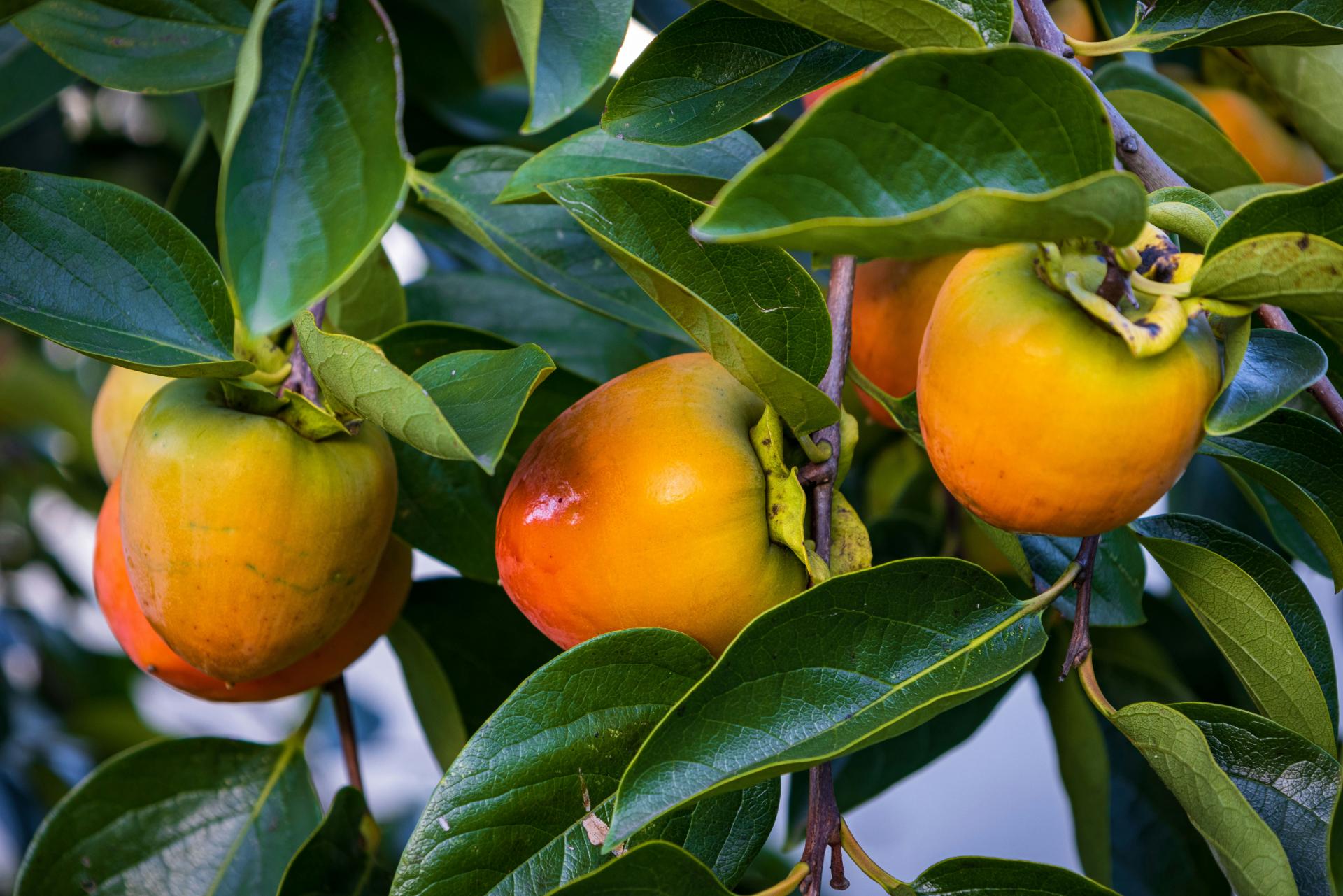You are here
Be A Better Gardener: Sourcing Persimmon Trees
Be A Better Gardener: Sourcing Persimmon Trees
by Thomas Christopher
Many years ago, while browsing in the library at the New York Botanical Garden, I discovered that institution’s collection of antique nursery catalogs. Talk about going down a rabbit hole; it was weeks before I resurfaced into the twentieth century. I was fascinated by the descriptions of long forgotten plant cultivars (some of which have since been revived by organizations such as Seed Savers’ Exchange) and the gaudy chromolithographs which portrayed flowers and fruits of impossible size and vibrancy. In short, I found a perfect fantasy of how I wished my garden could be. Most of all, though, I was amazed by the variety of wares you could purchase by mail order in those days. In the late 1870’s, for example, W. Atlee Burpee was selling not only seeds but also chickens, sheep dogs, and sheep, shipping them cross country successfully by railroad.
However, I long ago abandoned printed catalogs for their online versions. The virtual catalogs are less colorful than their paper predecessors, but they offer a similarly amazing access. With a couple of clicks I can pull up sales lists from vendors all over the world, and searches for particular species often take me to strange and exotic locations.
Recently, for example, I have been looking for sources of the new hybrid persimmon trees that were pioneered by Russian and Ukrainian orchardists, but which have since become a hot item among fruit enthusiasts in cooler regions of the United States. These hybrids have been produced by crossing cultivars of Asian persimmon (Diospyros kaki) with the native North American persimmon species, Diospyros virginiana. I’ve been a fan of persimmons since encountering wild trees in the hedgerows of central Texas 40 years ago. Their fruits were small, typically about an inch in diameter, and could be deliciously sweet once fully ripened. Could be; fruit quality varied with the tree and many bore fruits that were bitter or bland.
Asian persimmons, often called “Kaki,” produce much larger fruits. In fact, those of some cultivars may measure as much as five inches across. The long history of cultivation in Asia also means there are dozens of named strains in cultivation, so that the fruit quality is much more predictable.
Unfortunately, while the native North American Diospyros virginiana is hardy to USDA zone 4 (where winter temperatures dip on average to -30°F.) their Asian relatives aren’t, as a group, reliably hardy north of USDA zone 7 (where average winter lows are 0°F.). By crossing these two species, however, plant breeders have produced a number of hybrid cultivars that have medium-sized fruits with the sweetness of the best of the American species, and which are hardy into USDA zone 6 or even, in some instances, zone 5.
There are some other advantages of the hybrids. Whereas D. virginiana matures into a large tree as much as 60 feet or more tall, the hybrids reportedly are semi-dwarf, with some as short as 8-12ft. in height. These compact cultivars are also precocious, bearing fruit within a few years of planting. Finally, the wild-type D. virginiana persimmons require two trees, one male and the other female, to bear fruit, whereas the hybrids are self-pollinating, requiring only one tree.
Finding sources of these hybrid persimmon trees isn’t easy, even with an online search engine. Most of the mail-order nurseries Google has directed me to have proven to be already sold out for the planting season of 2024. I’ve signed up on waiting lists, but I’ve also resorted to an older, pre mail order type of plant source. I’ve been calling the best of the local garden centers, those run by real plant enthusiasts. These people understand and share my plant addiction and are sympathetic to my search. I’ve already purchased a sapling of ‘Nikita’s Gift,’ a Ukrainian hybrid, from one garden center, which volunteered to store the dormant plant until March, and the proprietor of another has promised to pick up for me whatever she can get this spring and has invited me to look at her hardy kiwi and passionflower vines. I still love browsing through catalogs, online and in print, but sometimes there’s no substitute for the personal touch.
Be-a-Better-Gardener is a community service of Berkshire Botanical Garden, located in Stockbridge, Mass. Its mission, to provide knowledge of gardening and the environment through a diverse range of classes and programs, informs and inspires thousands of students and visitors each year. Thomas Christopher is a volunteer at Berkshire Botanical Garden and is the author or co-author of more than a dozen books, including Nature into Art and The Gardens of Wave Hill (Timber Press, 2019). He is the 2021 Garden Club of America's National Medalist for Literature, a distinction reserved to recognize those who have left a profound and lasting impact on issues that are most important to the GCA. Christopher’s companion broadcast to this column, Growing Greener, streams on WESUFM.org, Pacifica Radio and NPR and is available at berkshirebotanical.org/growinggreener.
Help Our Garden Grow!
Your donation helps us to educate and inspire visitors of all ages on the art and science of gardening and the preservation of our environment.
All Donations are 100 percent tax deductible.


